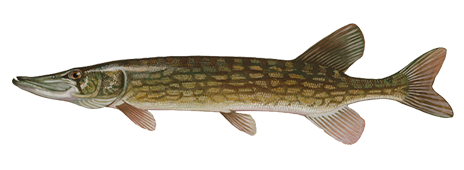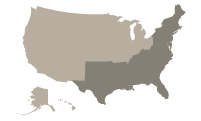
Chain Pickerel
All members of the genus Esox look very much alike. The chain pickerel can be recognized by its markings.

Region
South, Northeast
Catch ease
Medium
Habitat
Lake, Pond
How to identify a Chain Pickerel
The sides which are yellowish to greenish (almost black when young) are overlaid with a reticulated, or chain-like, pattern of black lines. Also, the pickerels (including the redfin and grass pickerels), have fully scaled cheeks and gill covers. The northern pike usually has no scales on the bottom half of the gill cover, and the muskellunge, E. masquinongy, usually has no scales on the bottom half of either the gill cover or the cheek.
Where to catch Chain Pickerel
It inhabits the eastern United States and Canada, from Nova Scotia southward through all of the Atlantic coast states and most of Florida, and westward through Georgia, Alabama, and Louisiana to as far as the Navasota River in eastern Texas. From Louisiana, it extends northward in the Mississippi River drainage through eastern Arkansas to southeastern Missouri and southwestern Kentucky. The following list includes additional details on where to catch this fish:
| Cliffs and Steep Shore Banks |
| Gradual Shores |
| Inlets and Outlets |
| Islands or Sand Bars |
| Open Water |
| Piers, Docks and Pilings |
| Rocks |
| Spring Holes |
| Walkways and Bridges |
| Freshwater Lakes and Ponds |
| Holes |
| Inside Turns and Coves |
| Lily Pads |
| Overhanging Trees and Bushes |
| Points and Break Lines |
| Shoreline Shallows |
| Sunken Objects |
| Freshwater Weed Beds |
How to catch Chain Pickerel
The following are fishing methods used to catch this fish:
Chain Pickerel lures, tackle & bait
The following are lures, tackle or bait that can be used to catch this fish:
